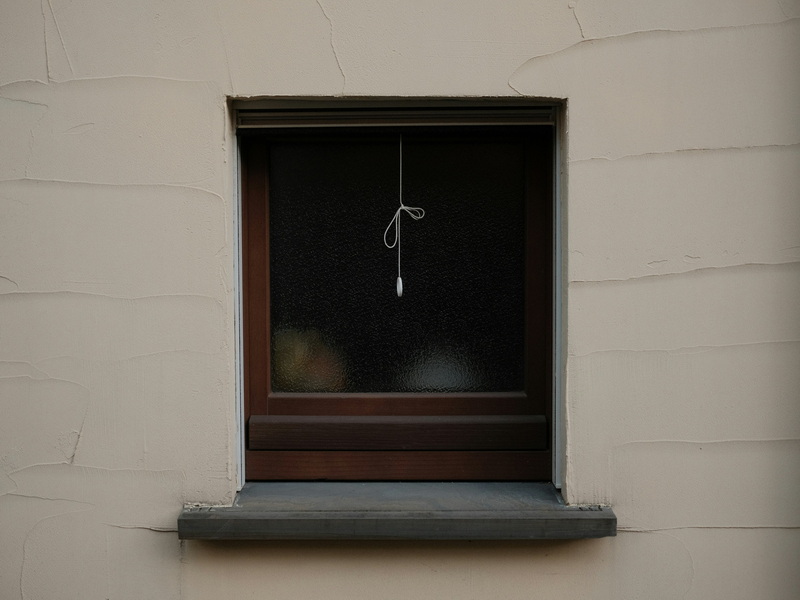English 







Content Menu
● Understanding Aluminum Windows
● Step-by-Step Installation Process
>> Final Checks
● Maintenance Tips for Aluminum Windows
● Benefits of Aluminum Windows
● Common Mistakes to Avoid During Installation
● FAQ
>> 1. What are aluminum windows?
>> 2. How do I measure for aluminum windows?
>> 3. What type of insulation should I use?
>> 4. Can I install aluminum windows myself?
>> 5. How do I maintain aluminum windows?
Installing aluminum windows can enhance the aesthetic appeal of your home while providing energy efficiency and durability. This comprehensive guide will walk you through the entire process of installing aluminum windows, from preparation to final adjustments.

Aluminum windows are popular due to their strength, low maintenance, and resistance to corrosion. They are available in various styles and colors, making them suitable for different architectural designs. Before you begin the installation process, it is essential to understand the types of aluminum windows available and their specific features.
There are several types of aluminum windows to consider:
- Casement Windows: These windows are hinged on one side and open outward, providing excellent ventilation and unobstructed views.
- Sliding Windows: Sliding windows consist of two or more sashes that slide horizontally. They are easy to operate and ideal for spaces where you want to maximize natural light.
- Awning Windows: Hinged at the top, awning windows open outward, allowing for ventilation even during rain.
- Picture Windows: These large, fixed windows provide expansive views and are often used in combination with operable windows for ventilation.
- Double-Hung Windows: Featuring two sashes that slide vertically, double-hung windows offer versatility in ventilation and ease of cleaning.
Before starting the installation, gather all necessary tools and materials. You will need:
- Safety equipment (gloves, goggles)
- Drill
- Spirit level
- Tape measure
- Set square
- Hammer
- Fixings (screws)
- Shims
- Silicone sealant
- Insulation material (foam or wool)
- Utility knife
- Caulking gun
- Pry bar

The first step in installing aluminum windows is preparing the opening. This involves several sub-steps:
- Measure the Opening: Ensure that the dimensions of the opening are correct for your new aluminum window. Measure the height and width at multiple points to confirm uniformity. The opening should be at least 1 inch wider and taller than the finished window dimensions.
- Clean the Opening: Remove any debris, dust, or old materials from the opening to ensure a clean installation surface.
- Inspect the Window: Before installation, inspect your aluminum window for any damage that may have occurred during shipping.
- Check for Levelness: Use a level to check if the sill is even. If it isn't, you may need to make adjustments before proceeding with installation.
Once the opening is prepared, you can proceed with installing the window:
- Place Shims: Position shims along the bottom of the buck (the wood framework) to support the window during installation. This also allows space for insulation and ensures that the window is level.
- Fit the Window: Lift the window into position, centering it within the opening.
- Check Level: Use a bubble or laser level to ensure that the window is level and plumb. Adjust its position using shims if necessary.
- Secure the Window: Fasten the window to the buck using screws appropriate for your framing material. Secure only on the sides of the window to avoid distorting its frame.
- Adjustments: After securing, double-check that everything is aligned correctly before fully tightening screws.
After securing the window, it's crucial to seal it properly:
- Apply Insulation: Insert insulation material between the window frame and opening to enhance energy efficiency. This step is vital as it helps prevent drafts and reduces energy costs over time.
- Seal Joints: Use silicone sealant around the exterior edges of the window to prevent water and air infiltration. Pay special attention to corners where leaks are most likely to occur.
- Interior Sealing: Inside your home, apply caulk around any gaps between your wall framing and window frame for additional insulation.
Once everything is installed, conduct final checks:
- Final Cleaning: Clean both the window and surrounding area thoroughly using a mild cleaner suitable for aluminum surfaces.
- Inspect Functionality: Ensure that all steps have been executed correctly and that the window operates smoothly without any obstructions or stiffness in movement.
- Test for Leaks: After sealing, test for leaks by spraying water around the edges of your new window during a light rain simulation or using a hose at low pressure.
Once your aluminum windows are installed, maintaining them properly will ensure their longevity:
- Regular Cleaning: Clean your aluminum frames regularly with soap and water to prevent dirt buildup. Avoid harsh chemicals that could damage finishes.
- Inspect Seals Annually: Check seals around your windows every year for signs of wear or damage; reseal as necessary to maintain energy efficiency.
- Lubricate Moving Parts: If your windows have moving parts like hinges or tracks, lubricate them periodically with a silicone-based lubricant to ensure smooth operation.
- Check Drainage Holes: Ensure that drainage holes at the bottom of each frame are clear of debris so water can escape easily during rainstorms.
- Repaint if Necessary: If you notice paint peeling or fading on painted aluminum frames, consider repainting them with a high-quality exterior paint designed for metal surfaces.
Aluminum windows offer numerous benefits that make them an excellent choice for homeowners looking to upgrade their properties:
- Durability: Aluminum is resistant to warping, cracking, and fading over time compared to wood or vinyl options.
- Low Maintenance: Unlike wooden frames that require regular painting or staining, aluminum frames only need occasional cleaning with soap and water.
- Energy Efficiency: Modern aluminum windows come with thermal breaks that improve insulation properties, helping reduce heating and cooling costs in your home.
- Aesthetic Versatility: With various colors and finishes available, aluminum windows can complement any architectural style while enhancing curb appeal.
- Environmentally Friendly Options: Many manufacturers offer recyclable aluminum options, making them an eco-friendly choice compared to other materials like vinyl that may not be as easily recycled.
To ensure a successful installation process without costly mistakes:
- Inaccurate Measurements: Always double-check measurements before cutting or purchasing materials; even small errors can lead to significant issues later on.
- Neglecting Sealant Application: Failing to apply sealant properly can lead to drafts or water leaks; take your time during this step for optimal results.
- Ignoring Local Building Codes: Be sure you're familiar with local building codes regarding window installations; this will help avoid potential fines or required rework later on.
- Rushing Through Installation Steps: Take your time during each phase of installation; rushing can lead to mistakes that may compromise functionality or aesthetics down the line.
- Overlooking Safety Precautions: Always wear safety gear when handling glass panes or heavy frames; this will help prevent accidents during installation.
Installing aluminum windows can be a rewarding DIY project that improves your home's energy efficiency and aesthetics while providing long-lasting durability with minimal maintenance requirements. By following these detailed steps carefully, you can ensure a proper installation that will last for years while enhancing your home's overall appearance and functionality.

Aluminum windows are frames made from aluminum that provide durability, low maintenance, and resistance to corrosion while offering various styles and colors.
Measure both height and width at multiple points in your opening, ensuring it is at least 1 inch larger than your new window dimensions for a proper fit.
You can use foam or wool insulation between the window frame and opening to improve energy efficiency.
Yes, with proper tools and following detailed instructions, you can install aluminum windows yourself as a DIY project.
Regularly clean them with mild soap and water, check for any signs of wear or damage, and ensure seals remain intact for optimal performance.
[1] https://gitportesfenetres.ca/en/resources/how-to-install-aluminum-window/
[2] https://cmd-jeld-wen.s3.us-east-2.amazonaws.com/assets/documents/2352113392.pdf
[3] https://blog.csdn.net/Angelina_Jolie/article/details/139147709
[4] https://www.youtube.com/watch?v=cUkwbxPrEq8
[5] https://www.workshop.bunnings.com.au/t5/Whole-of-House/How-to-replace-aluminium-windows/td-p/204438
[6] https://gist.github.com/allenfrostline/c6a18277370311e74899424aabb82297
[7] https://pdf.lowes.com/productdocuments/d931a510-e693-4e60-969b-46375ac646df/01120388.pdf
[8] https://www.monumentalwd.com/how-to-install-aluminum-windows/
[9] https://b3logfile.com/pdf/article/1653485885581.pdf
[10] https://images.thdstatic.com/catalog/pdfImages/e3/e316bb51-ca65-4725-8032-37f23ef0f06a.pdf
Top Aluminum Furnitures Manufacturers and Suppliers in Czech Republic
Top Aluminum Furnitures Manufacturers and Suppliers in Poland
Top Aluminum Furnitures Manufacturers and Suppliers in Belgium
Top Aluminum Furnitures Manufacturers and Suppliers in Finland
Top Aluminum Furnitures Manufacturers and Suppliers in Denmark
Top Aluminum Furnitures Manufacturers and Suppliers in Greece
Top Aluminum Furnitures Manufacturers and Suppliers in Portugal
Top Aluminum Furnitures Manufacturers and Suppliers in Austria
Top Aluminum Furnitures Manufacturers and Suppliers in Norway
Top Aluminum Furnitures Manufacturers and Suppliers in Sweden
